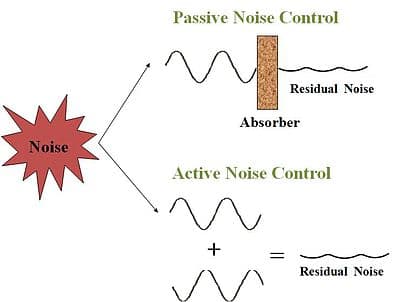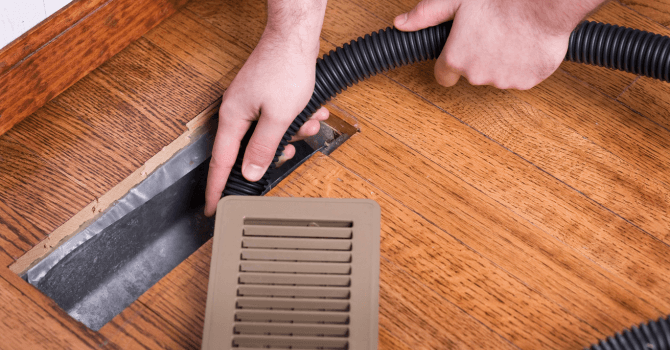
Did you know that air leakage can account for 25% of a home’s heat loss? Properly weatherizing your home is an essential part of limiting air- and water-leak damage, protecting your health and your family’s, but also lowering your utility bill.
Neglecting to repair your window caulking can be tempting, masquerading under your lack of skills to undertake such a project. However, it’s a minor DIY project that doesn’t call for much.
Why is replacing the old caulking around your windows so important? How can you tell if you’re doing it right? Keep reading this step-by-step guide to find out!
How to Caulk Your Windows: 4 Essential Steps for Caulking Replacement
1. Proceed with a Visual Analysis

Source: Canva
The importance of weatherizing lies in ensuring the walls of your home are air- and water-tight, a barrier against warm or cool drafts, keeping whatever may be damaging or detrimental to your health at bay. A properly caulked window will prevent humidity from seeping into your home’s insulation and thermal envelope.
First things first, proceed with a detailed visual analysis to detect any air drafts around the windows. A good way to find out if your windows are allowing outside air to filter in is to be on the lookout for spider webs; insects tend to weave their webs in areas with good airflow.
2. Remove the Old Caulk and Prepare the Surface
The existing caulk bead around your window has to be removed entirely. Given that the caulking will most likely be dry, it’s best to soften the bead beforehand for a hassle-free job. Use a heat or soldering gun, and run it back and forth along short sections at a time. Proceed cautiously as this step should be done without haste to avoid damaging the paint around the window frame.
Then, using a knife with a retractable sheath, slowly peel back the caulk to remove it. Once all the caulk has been removed, clean the surface with a rag dipped in lighter fluid to ensure the surface is rid of any caulking residue. Vacuum in between the window and window frame, removing any debris that might have fallen or gotten lodged. Additionally, make sure that the surface is entirely clean and devoid of any dust or paint chips.
Should the space you’re about to caulk be wider than ¼ inch, insert foam strips in the gap. The foam will ensure that the gaps are fully sealed, as well as provide additional cushioning for the caulk. If your window gaps are very wide, insert a filler material such as foam backer rods or foam ropes.
3. Install Window Sealant

Source: Canva
For professional-looking results, position the caulk gun at a right angle along the joint. Then, when caulking, gently squeeze the trigger and try to proceed continuously, without interrupting the flow, ensuring a smooth-looking finish.
Should you experience any difficulties in properly filling in the gaps, use a small disposable stick to push the paste into the space, properly filling it. Make sure the gaps are filled on both sides and add more sealant if needed. When completed, gently release the trigger to prevent the sealant from oozing out.
4. Smooth out the caulk bead
For a smooth, high-quality sealant, use a caulking spatula (or popsicle stick dipped in an anti-adhesive) to remove excess product. Note that the ideal seal should be 12 millimetres thick and form a 45-degree angle. Proceed carefully to eliminate all ridges or bubbles, as they’re both, aesthetically speaking, an eyesore and likely to become Petri dishes for dust.
Also, use a water-based or silicone caulking compound. That way, you can just dip your fingertip in a bowl of soapy water, and run it over the paste, smoothing out the sealant. The soap coating your fingertip will prevent the paste from sticking to your skin.
Effective Window Caulking Tips
Apply just the right amount of sealant—not too little, not too much. Cutting the tip too low, creating a wider than necessary opening, will dispense too much sealant.
Should this be your first go at caulking and you’re concerned about using too much sealant, apply painter’s tape parallel to the edges to make sure the lines are perfectly clean and straight.
To ensure the sealant’s durability, opt for a caulking product with a 30-year warranty.
Opt for a high-quality sealant, as cheap caulk can be difficult to apply and have limited durability.
Try to work in temperatures between 8–25 degrees Celsius, as this will prevent the caulk from curing too quickly.
If you suspect a draft coming in through your window mouldings, consider removing the moulding around the window, one by one, then inject polyurethane foam around the frame. Allow a few hours for the foam to expand and fill the gap.
Window Caulk: Why, When, and How Often?

Source: Canva
Why Should You Repair the Caulk Joints Around the Windows?
First of all, windows that haven’t been sealed properly will allow water to leak into the gap between the window and siding, eventually deteriorating it.
Then, during the winter, if your windows aren’t sealed correctly, cold air will filter into your home, resulting in a pricey heating bill. Additionally, the resulting moisture will damage your windows and window frames prematurely.
Should the caulk bead around your windows be especially dry or no longer fill out the cavity between the siding and the window, re-caulking your windows is a must.
For more information about weatherizing, check out our Weatherization Project Price Guide.
When Is the Best Time for Replacing Caulk Around Windows?

Source: Canva
Generally speaking, new caulking should be applied around windows as soon as you spot worn, deteriorating beads or feel air filtering through the window frame. Also, if you’ve recently carried out construction or renovation work near your windows, repairing the seal might be safe to ensure an airtight seal all around.
The best time of year to re-caulk your windows is either during the spring or fall. During either period of the year, the weather is ideal for applying and curing the seal, with moderate temperatures registering between 5°C and 25°C. When it’s too warm, the bead will soften; when it’s too cold, the bead risks cracking, making for a more difficult application process.
Moreover, re-caulking your windows during the spring or fall contributes to your efforts aimed at preparing your home for either extreme summertime or wintertime weather. As such, you’re reducing energy losses and improving indoor comfort.
How Often Should You Reseal Your Windows?
If you want to be extra cautious, it's recommended to re-caulk your windows every 5 years.
Get 3 quotes for replacing your windows and doors
RenoQuotes.com can help you get quotes for a window project. When you submit your project, we’ll put you in contact with top-rated contractors. Fill in the form on the homepage (it only takes a few minutes) and get estimates from trusted professionals.
Dial 1-844 828-1588 to speak with one of our customer service representatives.
Looking for something else?
Related articles
The latest industry news, interviews, technologies, and resources.

Editorial Team
•20 Dec 2023
Are you envisioning a big, picture window, yet know that double-glazed windows lose heat tenfold compared to walls? What if we said that with technological breakthroughs, there might be a way to design your dream home with the window game of your choosing without compromising on comfort?

Editorial Team
•13 Sep 2024
Insulating water supply pipes is a necessary measure that'll help protect pipes from freezing, bursting, or leaking. By insulating your pipes, you’re ensuring the safety and well-functioning of your home or business during the wintertime. It also helps reduce losses and improves the overall system.

Editorial Team
•07 Nov 2023
As a contractor, it’s your duty to inform your employees regarding the best workplace health and safety practices, if not put together a hazard prevention plan. Naturally, all lines of work have their risks, but if you can avoid catastrophes thanks to the right training and information, why go without?

Editorial Team
•31 Mar 2025
Are you an aspiring musician looking to record your first album in your very own studio? Or maybe you work from home alongside some fairly rambunctious children that can't seem to keep it down during work hours? Whatever the case, if you're looking to make a space quieter, there are various ways to soundproof a room or section of your home.

Editorial Team
•15 Apr 2024
Are you second-guessing the quality of the air you’re breathing in but have no idea how to fix the situation? Rest assured, this article details everything you should know about cleaning your home’s ventilation ducts.